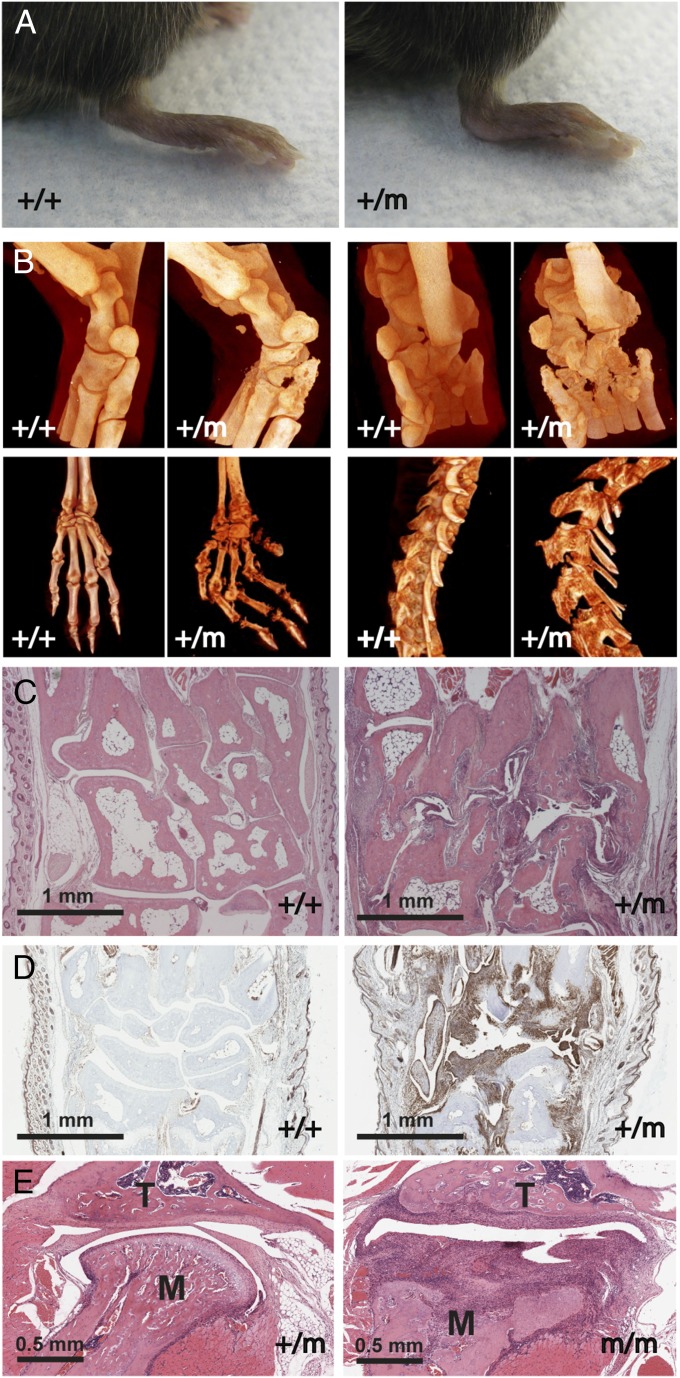Fig. 1.
BPSM1 mutant mice spontaneously develop chronic polyarthritis. (A) Hindpaws of 100- d-old BPM1+/m mice are luxated at the level of the ankle. (B) Micro X-ray computed tomography of ankles, paws, and spine of 170-d-old WT (+/+) and affected (+/m) BPSM1 mice showing extensive bone erosion and limb deformation in the mutants. (C) Representative sections through metatarsal bones stained with hematoxylin and eosin showing bone erosion and penetration of pannus tissue in ankle joints. (D) Representative sections through the wrists of 90-d-old mice show strong F4/80 staining of the pannus tissue in BPSM1+/m animals. (E) Sections through the temporomandibular joints of 43-d-old BPSM1+/m and BPSM1m/m mice exemplify the dramatic acceleration of disease development in homozygote BPSM1 mutant mice. M, mandible condyle; T, temporal bone.

